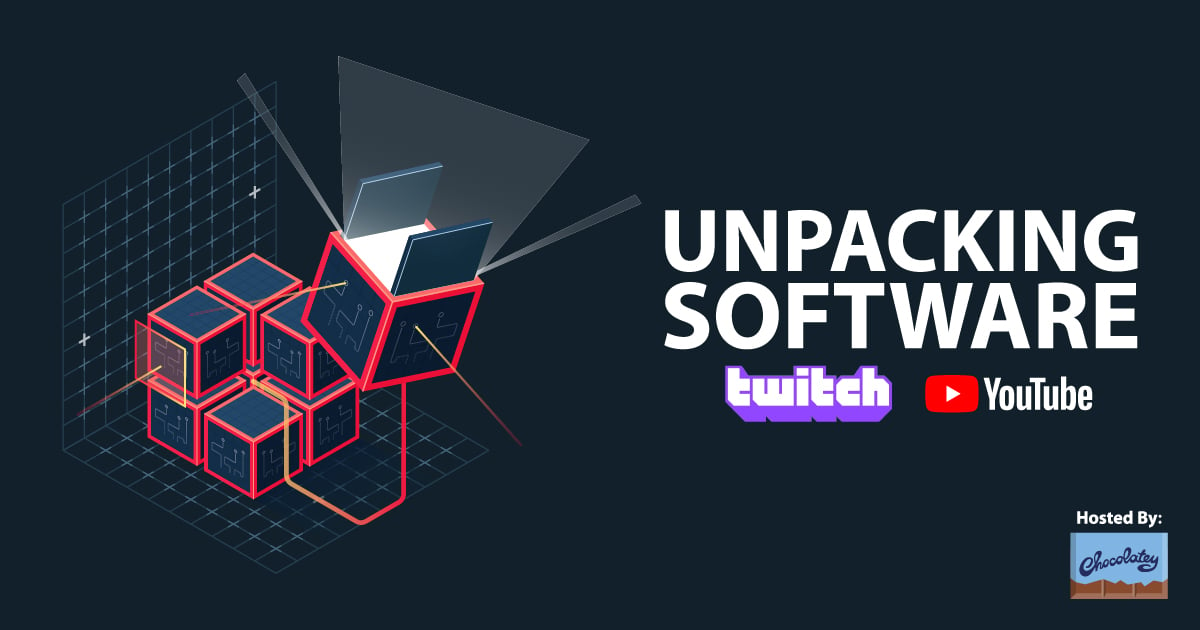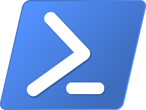
Downloads:
830,743
Downloads of v 3.10.2.0:
120,444
Last Update:
18 Nov 2023
Package Maintainer(s):
Software Author(s):
- Cabal Team
Tags:
Cabal
- 1
- 2
- 3
3.10.2.0 | Updated: 18 Nov 2023
Downloads:
830,743
Downloads of v 3.10.2.0:
120,444
Software Author(s):
- Cabal Team
Cabal 3.10.2.0
Legal Disclaimer: Neither this package nor Chocolatey Software, Inc. are affiliated with or endorsed by Cabal Team. The inclusion of Cabal Team trademark(s), if any, upon this webpage is solely to identify Cabal Team goods or services and not for commercial purposes.
- 1
- 2
- 3
All Checks are Passing
3 Passing Tests
Deployment Method: Individual Install, Upgrade, & Uninstall
To install Cabal, run the following command from the command line or from PowerShell:
To upgrade Cabal, run the following command from the command line or from PowerShell:
To uninstall Cabal, run the following command from the command line or from PowerShell:
Deployment Method:
This applies to both open source and commercial editions of Chocolatey.
1. Enter Your Internal Repository Url
(this should look similar to https://community.chocolatey.org/api/v2/)
2. Setup Your Environment
1. Ensure you are set for organizational deployment
Please see the organizational deployment guide
2. Get the package into your environment
Option 1: Cached Package (Unreliable, Requires Internet - Same As Community)-
Open Source or Commercial:
- Proxy Repository - Create a proxy nuget repository on Nexus, Artifactory Pro, or a proxy Chocolatey repository on ProGet. Point your upstream to https://community.chocolatey.org/api/v2/. Packages cache on first access automatically. Make sure your choco clients are using your proxy repository as a source and NOT the default community repository. See source command for more information.
- You can also just download the package and push it to a repository Download
-
Open Source
-
Download the package:
Download - Follow manual internalization instructions
-
-
Package Internalizer (C4B)
-
Run: (additional options)
choco download cabal --internalize --source=https://community.chocolatey.org/api/v2/ -
For package and dependencies run:
choco push --source="'INTERNAL REPO URL'" - Automate package internalization
-
Run: (additional options)
3. Copy Your Script
choco upgrade cabal -y --source="'INTERNAL REPO URL'" [other options]See options you can pass to upgrade.
See best practices for scripting.
Add this to a PowerShell script or use a Batch script with tools and in places where you are calling directly to Chocolatey. If you are integrating, keep in mind enhanced exit codes.
If you do use a PowerShell script, use the following to ensure bad exit codes are shown as failures:
choco upgrade cabal -y --source="'INTERNAL REPO URL'"
$exitCode = $LASTEXITCODE
Write-Verbose "Exit code was $exitCode"
$validExitCodes = @(0, 1605, 1614, 1641, 3010)
if ($validExitCodes -contains $exitCode) {
Exit 0
}
Exit $exitCode
- name: Install cabal
win_chocolatey:
name: cabal
version: '3.10.2.0'
source: INTERNAL REPO URL
state: present
See docs at https://docs.ansible.com/ansible/latest/modules/win_chocolatey_module.html.
chocolatey_package 'cabal' do
action :install
source 'INTERNAL REPO URL'
version '3.10.2.0'
end
See docs at https://docs.chef.io/resource_chocolatey_package.html.
cChocoPackageInstaller cabal
{
Name = "cabal"
Version = "3.10.2.0"
Source = "INTERNAL REPO URL"
}
Requires cChoco DSC Resource. See docs at https://github.com/chocolatey/cChoco.
package { 'cabal':
ensure => '3.10.2.0',
provider => 'chocolatey',
source => 'INTERNAL REPO URL',
}
Requires Puppet Chocolatey Provider module. See docs at https://forge.puppet.com/puppetlabs/chocolatey.
4. If applicable - Chocolatey configuration/installation
See infrastructure management matrix for Chocolatey configuration elements and examples.
This package was approved as a trusted package on 19 Nov 2023.
The 'cabal.exe' command-line program simplifies the process of managing Haskell software by automating the fetching, configuration, compilation and installation of Haskell libraries and programs.
Cabal is a system for building and packaging Haskell libraries and programs. It defines a common interface for package authors and distributors to easily build their applications in a portable way. Cabal is part of a larger infrastructure for distributing, organizing, and cataloging Haskell libraries and programs.
Specifically, the Cabal describes what a Haskell package is, how these packages interact with the language, and what Haskell implementations must to do to support packages. The Cabal also specifies some infrastructure (code) that makes it easy for tool authors to build and distribute conforming packages.
The Cabal is only one contribution to the larger goal. In particular, the Cabal says nothing about more global issues such as how authors decide where in the module name space their library should live; how users can find a package they want; how orphan packages find new owners; and so on.
$version = '3.10.2.0'
$packageName = 'cabal'
$url = 'https://downloads.haskell.org/cabal/cabal-install-3.2.0.0/cabal-install-3.2.0.0-i386-unknown-mingw32.zip'
$url64 = 'https://downloads.haskell.org/cabal/cabal-install-3.10.2.0/cabal-install-3.10.2.0-x86_64-windows.zip'
$binRoot = $(Split-Path -parent $MyInvocation.MyCommand.Definition)
$packageFullName = Join-Path $binRoot ($packageName + '-' + $version)
$is64 = (Get-OSArchitectureWidth 64) -and $env:chocolateyForceX86 -ne 'true'
$cabal = Join-Path $packageFullName "cabal.exe"
function Find-Entry {
param( [string] $app )
Get-Command -ErrorAction SilentlyContinue $app `
| Select-Object -first 1 `
| ForEach-Object { Split-Path $_.Path -Parent }
}
Function Execute-Command {
param( [string] $commandTitle
, [string] $commandPath
, [string] $commandArguments
)
Try {
$pinfo = New-Object System.Diagnostics.ProcessStartInfo
$pinfo.FileName = $commandPath
$pinfo.RedirectStandardError = $true
$pinfo.RedirectStandardOutput = $true
$pinfo.UseShellExecute = $false
$pinfo.Arguments = $commandArguments
$pinfo.WindowStyle = [Diagnostics.ProcessWindowStyle]::Hidden
$pinfo.CreateNoWindow = $true
$p = New-Object System.Diagnostics.Process
$p.StartInfo = $pinfo
$p.Start() | Out-Null
[pscustomobject]@{
commandTitle = $commandTitle
stdout = $p.StandardOutput.ReadToEnd()
stderr = $p.StandardError.ReadToEnd()
ExitCode = $p.ExitCode
}
$p.WaitForExit()
}
Catch {
exit
}
}
function Find-MSYS2 {
param()
# See if the user has msys2 already installed.
$msys2 = Find-Entry "msys2_shell.cmd"
if (($null -eq $msys2) -or ($msys2 -eq "")) {
$msys2 = Find-Entry "mingw*_shell.bat"
}
$dir_name = if ($is64) { 'msys64' } else { 'msys32' }
# Check for standalone msys2 installs
if (($null -eq $msys2) -or ($msys2 -eq "")) {
$tmp = Join-Path $Env:SystemDrive $dir_name
if (Test-Path $tmp -PathType Container) {
Write-Host "Standalone msys2 detected. Using default paths."
$msys2 = $tmp
}
}
if (($null -eq $msys2) -or ($msys2 -eq "")) {
# msys2 was not found already installed, assume user will install
# it in the default directory, so create the expected default msys2
# installation path.
$msys2 = "{0}\\{1}" -f (Get-ToolsLocation), $dir_name
}
Write-Debug "Msys2 directory: ${msys2}"
return $msys2
}
function ReadCabal-Config {
param( [string] $key )
$prog = "$cabal"
$cmd = "user-config diff -a ${key}:"
$proc = Execute-Command "Reading cabal config key '${key}'." $prog $cmd
if ($proc.ExitCode -ne 0) {
Write-Error $proc.stdout
Write-Error $proc.stderr
throw ("Could not read cabal configuration key '${key}'.")
}
$option = [System.StringSplitOptions]::RemoveEmptyEntries
$procout = $proc.stdout.Split([Environment]::NewLine) | Select-String "- ${key}" | Select-Object -First 1
if (!$procout) {
Write-Debug "No Cabal config for ${key}"
return {@()}.Invoke()
} else {
$value = $procout.ToString().Split(@(':'), 2, $option)[1].ToString()
$value = $value.Split([Environment]::NewLine)[0].Trim()
Write-Debug "Read Cabal config ${key}: ${value}"
return {$value.Replace('"','').Split(@(','), $option)}.Invoke()
}
}
function UpdateCabal-Config {
param( [string] $key
, [string[]] $values
)
if ((!$values) -or ($values.Count -eq 0)) {
$values = ""
} else {
#$value = '"' + [String]::Join("`",`"", $values) + '"'
$value = [String]::Join(",", $values)
}
$prog = "$cabal"
$cmd = "user-config update -a `"${key}: $value`""
$proc = Execute-Command "Update cabal config key '${key}'." $prog $cmd
if ($proc.ExitCode -ne 0) {
Write-Error $proc.stdout
Write-Error $proc.stderr
throw ("Could not update cabal configuration key '${key}'.")
}
Write-Debug "Wrote Cabal config ${key}: ${value}"
}
function Restore-Config-Cabal {
param()
$ErrorActionPreference = 'Stop'
$msys2_path = Find-MSYS2
$prog_path = ReadCabal-Config "extra-prog-path"
$lib_dirs = ReadCabal-Config "extra-lib-dirs"
$include_dirs = ReadCabal-Config "extra-include-dirs"
$native_path = if ($is64) { 'mingw64' } else { 'mingw32' }
$native_path = Join-Path $msys2_path $native_path
$msys_lib_dir = Join-Path $native_path "lib"
# Build new binary paths
$native_bin = Join-Path $native_path "bin"
$new_prog_paths = {$prog_path}.Invoke()
$new_prog_paths.Remove((Join-Path (Join-Path $msys2_path "usr") "bin")) | Out-Null
$new_prog_paths.Remove(($native_bin)) | Out-Null
$new_prog_paths = $new_prog_paths | Select-Object -Unique
# Build new library paths
$new_lib_dirs = {$lib_dirs}.Invoke()
$new_lib_dirs.Remove((Join-Path $native_path "lib")) | Out-Null
$new_lib_dirs = $new_lib_dirs | Select-Object -Unique
# Build new include paths
$new_include_dirs = {$include_dirs}.Invoke()
$new_include_dirs.Remove((Join-Path $native_path "include")) | Out-Null
$new_include_dirs = $new_include_dirs | Select-Object -Unique
UpdateCabal-Config "extra-prog-path" $new_prog_paths
UpdateCabal-Config "extra-lib-dirs" $new_lib_dirs
UpdateCabal-Config "extra-include-dirs" $new_include_dirs
Write-Host "Restored cabal configuration."
}
# Now execute cabal configuration updates
Restore-Config-Cabal
Uninstall-ChocolateyEnvironmentVariable -VariableName '_MSYS2_BASH'
Uninstall-ChocolateyEnvironmentVariable -VariableName '_MSYS2_PREFIX'
# Cleanup the batch file we created
Get-Command "mingw64-pkg.bat" -ErrorAction SilentlyContinue `
| ForEach-Object { Remove-Item -Force $_ -ErrorAction SilentlyContinue }<#
.SYNOPSIS
Install a Mingw-w64 native package such that cabal and ghc will recognize them.
.DESCRIPTION
This CmdLet makes it easier to install native Mingw-w64 packages into MSYS2 such
that cabal-install and GHC can use them without any other configuration required.
This will not allow installation of MSYS2 packages. Your global namespace will
not be poluted by the use of this CmdLet.
.PARAMETER Action
The action to perform. Must be one of install, uninstall, update or shell.
- install: install a new native package
- uninstall: remove native package
- update: sync the repositories, will not upgrade any packages.
- shell: open a bash shell
.PARAMETER Package
The name of the Mingw64 package to install into the msys2 environment.
.PARAMETER NoConfirm
Indicates whether or not an interactive prompt should be used to confirm before
action is carried out.
.EXAMPLE
C:\PS> mingw-pkg install gtk2
.NOTES
Author: Tamar Christina
Date: February 16, 2019
#>
Param(
[ValidateSet("install","uninstall", "update", "shell")]
[String] $Action
, [string] $Package
, [string] $NoConfirm = "--confirm"
)
$bash = $Env:_MSYS2_BASH
$prefix = $Env:_MSYS2_PREFIX
if ((!$bash) -or ($bash -eq "") -or (!$prefix) -or ($prefix -eq "")) {
throw ("Bash environment variable found, are you sure you installed cabal and msys2 via chocolatey?")
}
if(![System.IO.File]::Exists($bash)){
throw ("Bash not found, try `choco install msys2' first.")
}
$package = "mingw-w64-${prefix}-${Package}"
$shell = $false
switch ($Action){
"install" {
$cmd = "-S"
if((!$Package) -or ($Package -eq "")){
throw ("Package name required when installing package.")
}
break
}
"uninstall" {
$cmd = "-R"
if((!$Package) -or ($Package -eq "")){
throw ("Package name required when removing package.")
}
break
}
"update" {
$cmd = "-Sy"
$package = ""
break
}
"shell" {
$shell = $true
break
}
default {
Write-Host ".SYNOPSIS
Install a Mingw-w64 native package such that cabal and ghc will recognize them.
.DESCRIPTION
This CmdLet makes it easier to install native Mingw-w64 packages into MSYS2 such
that cabal-install and GHC can use them without any other configuration required.
This will not allow installation of MSYS2 packages. Your global namespace will
not be poluted by the use of this CmdLet.
.PARAMETER Action
The action to perform. Must be one of install, uninstall, update or shell.
- install: install a new native package
- uninstall: remove native package
- update: sync the repositories, will not upgrade any packages.
- shell: open a bash shell
.PARAMETER Package
The name of the Mingw64 package to install into the msys2 environment.
.PARAMETER NoConfirm
Indicates whether or not an interactive prompt should be used to confirm before
action is carried out.
.EXAMPLE
C:\PS> mingw-pkg install gtk2 [--confirm|--noconfirm]
.NOTES
Author: Tamar Christina
Date: February 16, 2019"
return
}
}
switch ($NoConfirm){
"--noconfirm" {
$arg = "--noconfirm"
break
}
"--confirm" {
$arg = "--confirm"
break
}
default {
Write-Error "Unkown option $NoConfirm. Expected --confirm or --noconfirm."
return;
}
}
$osBitness = "64"
if ($prefix -eq "i686") {
$osBitness = "32"
}
# Set the APPDATA path which does not get inherited during these invokes
# and set MSYSTEM to make sure we're using the right system
$envdata = "export APPDATA=""" + $Env:AppData + """ && export MSYSTEM=MINGW" + $osBitness + " && "
if ($false -eq $shell) {
$proc = Start-Process -NoNewWindow -UseNewEnvironment -Wait $bash `
-ArgumentList '--login', '-c', "'$envdata pacman $cmd $arg $package'" `
-PassThru
if ((-not $ignoreExitCode) -and ($proc.ExitCode -ne 0)) {
throw ("`'${bash}`' did not complete successfully. ExitCode: " + $proc.ExitCode)
}
} else {
$proc = Start-Process -NoNewWindow -UseNewEnvironment -Wait $bash `
-ArgumentList '--login' `
-PassThru
}
Copyright (c) 2003-2023, Cabal Development Team.
See the AUTHORS file for the full list of copyright holders.
See */LICENSE for the copyright holders of the subcomponents.
All rights reserved.
Redistribution and use in source and binary forms, with or without
modification, are permitted provided that the following conditions are
met:
* Redistributions of source code must retain the above copyright
notice, this list of conditions and the following disclaimer.
* Redistributions in binary form must reproduce the above
copyright notice, this list of conditions and the following
disclaimer in the documentation and/or other materials provided
with the distribution.
* Neither the name of Isaac Jones nor the names of other
contributors may be used to endorse or promote products derived
from this software without specific prior written permission.
THIS SOFTWARE IS PROVIDED BY THE COPYRIGHT HOLDERS AND CONTRIBUTORS
"AS IS" AND ANY EXPRESS OR IMPLIED WARRANTIES, INCLUDING, BUT NOT
LIMITED TO, THE IMPLIED WARRANTIES OF MERCHANTABILITY AND FITNESS FOR
A PARTICULAR PURPOSE ARE DISCLAIMED. IN NO EVENT SHALL THE COPYRIGHT
OWNER OR CONTRIBUTORS BE LIABLE FOR ANY DIRECT, INDIRECT, INCIDENTAL,
SPECIAL, EXEMPLARY, OR CONSEQUENTIAL DAMAGES (INCLUDING, BUT NOT
LIMITED TO, PROCUREMENT OF SUBSTITUTE GOODS OR SERVICES; LOSS OF USE,
DATA, OR PROFITS; OR BUSINESS INTERRUPTION) HOWEVER CAUSED AND ON ANY
THEORY OF LIABILITY, WHETHER IN CONTRACT, STRICT LIABILITY, OR TORT
(INCLUDING NEGLIGENCE OR OTHERWISE) ARISING IN ANY WAY OUT OF THE USE
OF THIS SOFTWARE, EVEN IF ADVISED OF THE POSSIBILITY OF SUCH DAMAGE.
Log in or click on link to see number of positives.
- cabal-install-3.2.0.0-i386-unknown-mingw32.zip (01e14a9c4ec9) - ## / 51
- cabal.3.10.2.0.nupkg (051ec3946e50) - ## / 62
- cabal-install-3.10.2.0-x86_64-windows.zip (b09e335b2ebe) - ## / 64
In cases where actual malware is found, the packages are subject to removal. Software sometimes has false positives. Moderators do not necessarily validate the safety of the underlying software, only that a package retrieves software from the official distribution point and/or validate embedded software against official distribution point (where distribution rights allow redistribution).
Chocolatey Pro provides runtime protection from possible malware.
| Add to Builder | Version | Downloads | Last Updated | Status |
|---|---|---|---|---|
| Cabal 3.10.2.0 | 120444 | Saturday, November 18, 2023 | Approved | |
| Cabal 3.10.1.1 | 70289 | Thursday, March 23, 2023 | Approved | |
| Cabal 3.8.1.0 | 138306 | Tuesday, August 9, 2022 | Approved | |
| Cabal 3.6.2.0 | 164508 | Wednesday, October 13, 2021 | Approved | |
| Cabal 3.6.0.0 | 835 | Wednesday, October 13, 2021 | Approved | |
| Cabal 3.4.1.0 | 7758 | Wednesday, October 13, 2021 | Approved | |
| Cabal 3.4.0.1-rc3 | 5220 | Thursday, December 24, 2020 | Approved | |
| Cabal 3.4.0.0 | 100245 | Friday, February 26, 2021 | Approved | |
| Cabal 3.4.0.0-rc5 | 2753 | Sunday, January 3, 2021 | Exempted | |
| Cabal 3.4.0.0-rc3 | 391 | Saturday, October 10, 2020 | Exempted | |
| Cabal 3.2.0.0 | 112581 | Friday, April 10, 2020 | Approved | |
| Cabal 3.0.0.0 | 31402 | Thursday, August 29, 2019 | Approved | |
| Cabal 2.4.1.0 | 28839 | Monday, November 26, 2018 | Approved | |
| Cabal 2.4.0.20180922 | 2625 | Sunday, September 23, 2018 | Approved | |
| Cabal 2.4.0.0 | 1767 | Saturday, September 22, 2018 | Approved | |
| Cabal 2.2.0.0 | 6472 | Thursday, March 29, 2018 | Approved | |
| Cabal 2.0.0.1 | 2870 | Tuesday, February 6, 2018 | Approved | |
| Cabal 2.0.0.0 | 5779 | Thursday, August 17, 2017 | Approved | |
| Cabal 1.24.0.2 | 4739 | Saturday, January 14, 2017 | Approved | |
| Cabal 1.24.0.0 | 5103 | Saturday, May 14, 2016 | Approved | |
| Cabal 1.22.0.0 | 481 | Saturday, May 14, 2016 | Approved | |
| Cabal 1.20.0.3 | 531 | Tuesday, May 17, 2016 | Approved | |
| Cabal 1.20.0.2 | 551 | Saturday, May 14, 2016 | Approved | |
| Cabal 1.20.0.1 | 516 | Saturday, May 14, 2016 | Approved | |
| Cabal 1.18.0.3 | 499 | Saturday, May 14, 2016 | Approved | |
| Cabal 1.18.0.2 | 483 | Saturday, May 14, 2016 | Approved | |
| Cabal 1.18.0.1 | 518 | Saturday, May 14, 2016 | Approved | |
| Cabal 0.14.0 | 508 | Saturday, May 14, 2016 | Approved | |
| Cabal 0.10.2 | 491 | Saturday, May 14, 2016 | Approved | |
| Cabal 0.8.2 | 540 | Saturday, May 14, 2016 | Approved | |
| Cabal 0.8.0 | 491 | Saturday, May 14, 2016 | Approved | |
| Cabal 0.6.4 | 489 | Saturday, May 14, 2016 | Approved | |
| Cabal 0.6.2 | 539 | Saturday, May 14, 2016 | Approved | |
| Cabal 0.6.0 | 534 | Saturday, May 14, 2016 | Approved |
Copyright (c) 2003-2023, Isaac Jones, Simon Marlow, Martin Sjögren, Bjorn Bringert, Krasimir Angelov, Malcolm Wallace, Ross Patterson, Lemmih, Paolo Martini, Don Stewart, Duncan Coutts
This package has no dependencies.
Ground Rules:
- This discussion is only about Cabal and the Cabal package. If you have feedback for Chocolatey, please contact the Google Group.
- This discussion will carry over multiple versions. If you have a comment about a particular version, please note that in your comments.
- The maintainers of this Chocolatey Package will be notified about new comments that are posted to this Disqus thread, however, it is NOT a guarantee that you will get a response. If you do not hear back from the maintainers after posting a message below, please follow up by using the link on the left side of this page or follow this link to contact maintainers. If you still hear nothing back, please follow the package triage process.
- Tell us what you love about the package or Cabal, or tell us what needs improvement.
- Share your experiences with the package, or extra configuration or gotchas that you've found.
- If you use a url, the comment will be flagged for moderation until you've been whitelisted. Disqus moderated comments are approved on a weekly schedule if not sooner. It could take between 1-5 days for your comment to show up.









 Ansible
Ansible

 PS DSC
PS DSC

